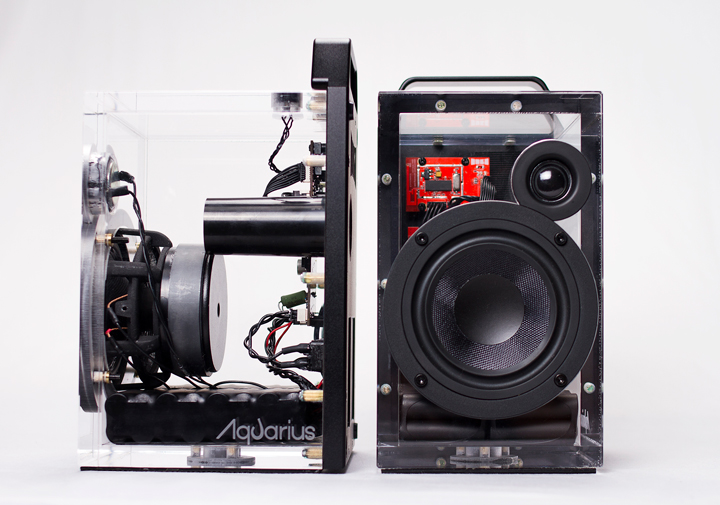Who is Eleven Engineering and why was the SKAA standard created?
In 1992, EE was born as an engineering/product development house. As a matter of fact, Eleven actually shipped the world’s first RF wireless controller for Playstation, interestingly named Airplay years before Apple ever thought of that name.
In the early 2000s, Eleven morphed into a leader in wireless audio semiconductors and subsequently has been doing that exclusively since 2004. In the early days, we provided typical chip solutions to brands and even though the chips were the same for each brand, the solutions were not interoperable between brands. There was no standard. However, first-tier brands flocked to us due to our rock solid reliability.
After some time, we realized that there needed to be a proper wireless audio standard. As you know, BT and WiFi were never designed for wireless audio transmission but rather have been band-aided over and over to achieve the goal but still with many limitations and downfalls.
Eleven’s solutions are purpose-built for one thing-delivering the best possible wireless audio. How do we do this? Eleven is totally vertical. We provide the only solution that’s built from the ground up, from the transistor level to the chip level, SiPs and modules, development tools that write the software to the OS itself…..we sweat every detail….…even the processor architecture on our silicon is our own design.
No one does it this deep. Others use off-the-shelf Wi-Fi, BT chips and stock processors which are intrinsically bad at realtime applications. Since others use these common, stock ingredients to begin with, they all start basically from the same place before adding their spices to make it their own. To stay with the food analogy, we grow our own food, we create our own special spices and we prepare them with our own recipes.
There are many wireless solutions available, so, in layman’s terms, why is SKAA the best wireless audio solution?
Keeping it simple: ease-of-use, crazy flexibility, and rock solid QoS are the value proposition of SKAA. To put it in basic terms, SKAA is ridiculously easy, you can use it in thousands of ways, and it’s the most reliable wireless audio solution out there.
SKAA offers low latency, the best time alignment in the category (multiple speakers output the audio at exactly the same time), the greatest number of use cases since SKAA works across whole home, portable, headphone, home theatre, 12V and prosumer segments, no cumbersome pairing process, no content or source limitations, no network required (meaning no IT team needed to set up the system; no password to remember; no outages; no decrease in performance due to heavy internet traffic; etc.) we let Wi-Fi do what Wi-Fi was designed for and that is to reach up into the cloud for your content.
Speaking of flexibility and ease of use, SKAA also offers a free APP named SKAA CMD (pronounced COMMAND) for Mac OS, Android, iOS, and Windows operating systems. SKAA CMD is not required but if you choose to use it, it offers many valuable features. You may customize your speakers, headphones, and transmitters by giving them quirky, eccentric names. Know at a glance what devices are bonded and playing. Control each receiver’s volume individually, or all together. Set up whether each is playing stereo, mono, left or right audio. SKAA cmd has all that, and more.
Earlier it was mentioned that SKAA has low latency, so why is low latency important in wireless audio transmission?
Do you remember the old Kung Fu movies where you would see the person speak on screen, then you hear the voice? Well imagine now watching a movie, you see the explosion then wait for it, OK now you hear the explosion. Not a good user experience at all. With SKAA’s fixed low latency, this is not an issue. Hear the explosions right as they happen, not a second later! And while movies and video are certainly challenging, even much more challenging are games — Remember, games represent more than half of the apps sold on both iTunes App Store and Google Play. Due to the inherent latency in BT or Wi-Fi, watching video or playing high speed games with either of these technologies would either be a miserable user experience or not even possible at all. With SKAA, latency is not a concern.
What do you mean by QoS (Quality of Service)?
By QoS, I am referring to rock solid reliability, no interference, no pops, no drops, robust, great range- everything you want in a wireless system. If you experience good QoS you don’t notice because you expect it. But if you have poor QoS, you definitely notice, it is very obvious. You hear talk about other wireless technologies and their deficiencies or difficulties in connecting or dropping out. What you don’t hear is talk about SKAA issues because it just works fantastically, every time.5. Bluetooth is ubiquitous, so how do you compete with something that is in everyone’s pocket every day (i.e. mobile phone).
Bluetooth is ubiquitous, so how do you compete with something that is in everyone’s pocket every day (i.e. mobile phone).
Bluetooth is for sure ubiquitous and that actually drives our quality-centric customers nuts. Imagine you’re Bose or Harman and you’ve worked for decades to boost your brand equity —to make your name really stand for quality. And now your marketing VP tells you that you HAVE to do put Bluetooth in your product. So your great acoustics, driver design, your brilliant amplifier design, inspired ID and user interface are all compromised because adding a weak link like Bluetooth is the weakest link in the whole product and our customers know it. This customer dynamic is actually what drove us to create SKAA in the first place.
Having said that, since BT is ubiquitous and we realize it isn’t going away anytime soon, instead of fighting it we chose to embrace BT and actually put a BT onramp into our Nadja module. Nadja accepts a BT signal and then relays it out via SKAA to additional speakers. You can call it networked BT. Of course, the weakest link in this chain is BT itself. Imagine walking into your house, hitting play on your smartphone and your soundbar begins playing tunes but not only your SB but the audio is also transmitted out via SKAA to other SKAA speakers, such as a kitchen speaker, an outdoor speaker, etc… Nadja really combines the best of both worlds…the ubiquitous benefits of BT but with the additional benefits of SKAA.
How many receivers (speakers) can SKAA broadcast to at once?
One SKAA transmitter (audio source) can send to four receivers at the same time. That’s one SKAA cell. By the way, our Nadja cells are five speakers fed from one Bluetooth source.
I can also say that dual-cell SKAA transmitters are on the roadmap for 2017. So that’s eight receivers from one SKAA transmitter.
Even more important to note is that SKAA was designed from the ground up to support multiple cells in a single home. Today you can have a home with five SKAA cells with no problem. Because that’s today’s world right? … not one audio source in the house, but many of them. So you can have 20 SKAA receivers in your house today, if you’d like. And the cool part is every one of of those receivers (speakers, headphones, receiver boxes) can choose with the click of a button which of those five audio sources its listening to.
Looking forward a few years, how much better will wireless audio be and how will Eleven Engineering and SKAA be involved in bringing us to that level?
Wireless audio is currently dominated by BT and Wi-Fi, kind of like what old-school cell phones were prior to smart phones with functionality being basic and use cases limited. A few years from now, it will be a renaissance of flexibility. Such as the use case where you won’t buy an expensive wireless system using WiFi only to find out you can’t play a game with it or use wireless headphones. SKAA offers this capability today and of course we will not stop innovating.

Edmonton, Alberta, Canada-based Eleven Engineering, Inc. is a market leader in microprocessors SiPs (System in Package) and modules designed for wireless audio for Home Theater, Multi-Room, Portable, and Pro Audio products. Eleven’s XInC2 multithreaded processor was designed specifically for digital wireless audio applications but is also well suited for other realtime intensive microprocessor applications.
Eleven’s high-performance wireless audio semiconductors, equipped with XInC2 wireless processor cores, are complete solutions for high-quality digital wireless audio transport. WFD™, Eleven’s proprietary wireless audio transport protocol, has a narrow footprint in the radio spectrum, delivering both best-in-class coexistence with WiFi / Bluetooth and unparalleled Quality of Service.

